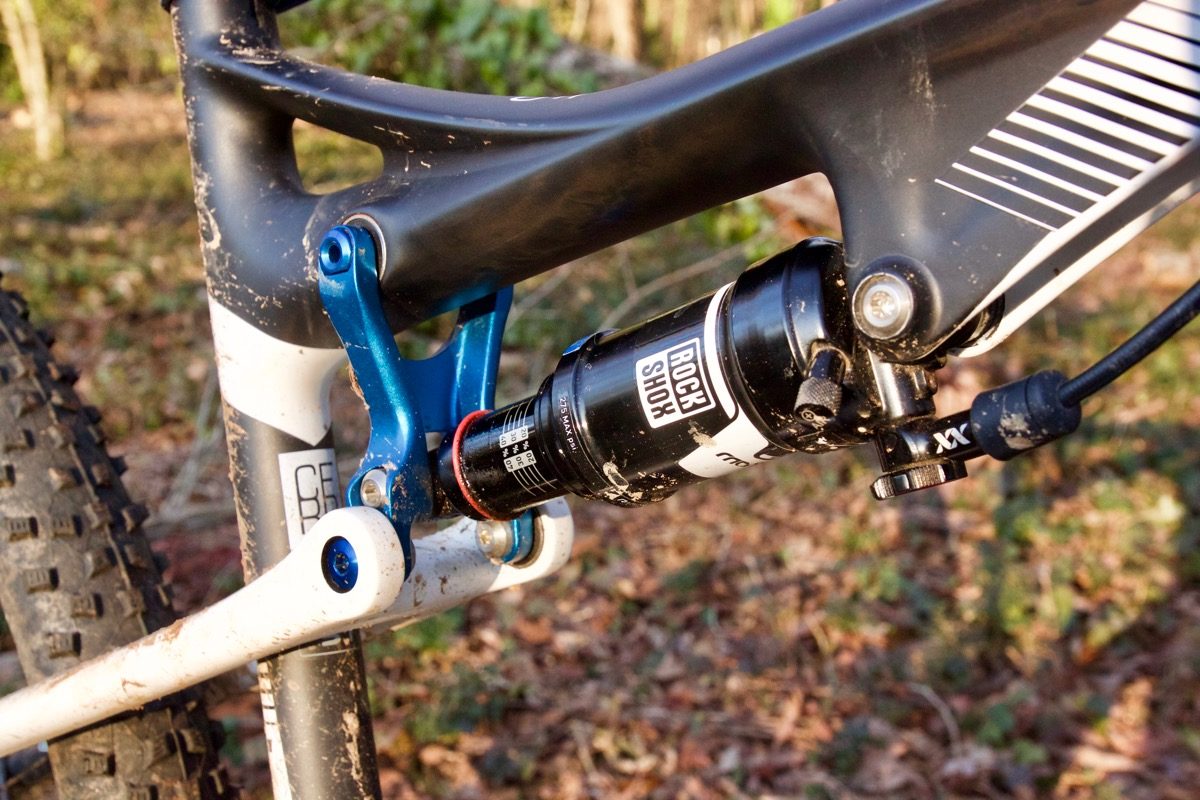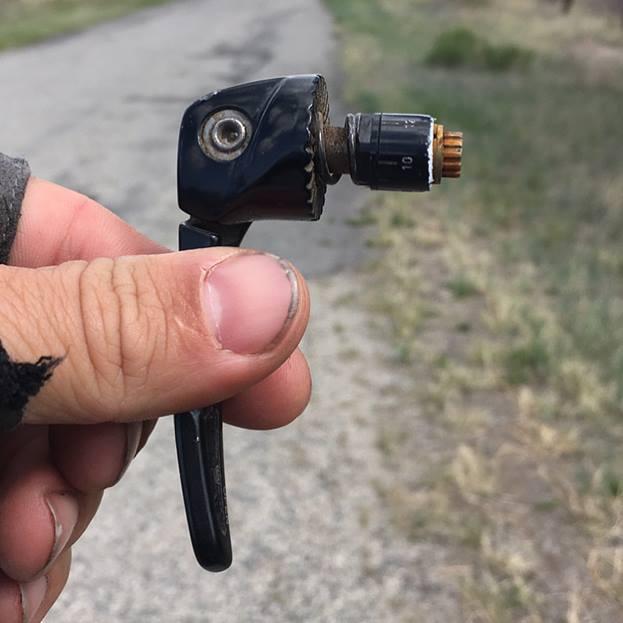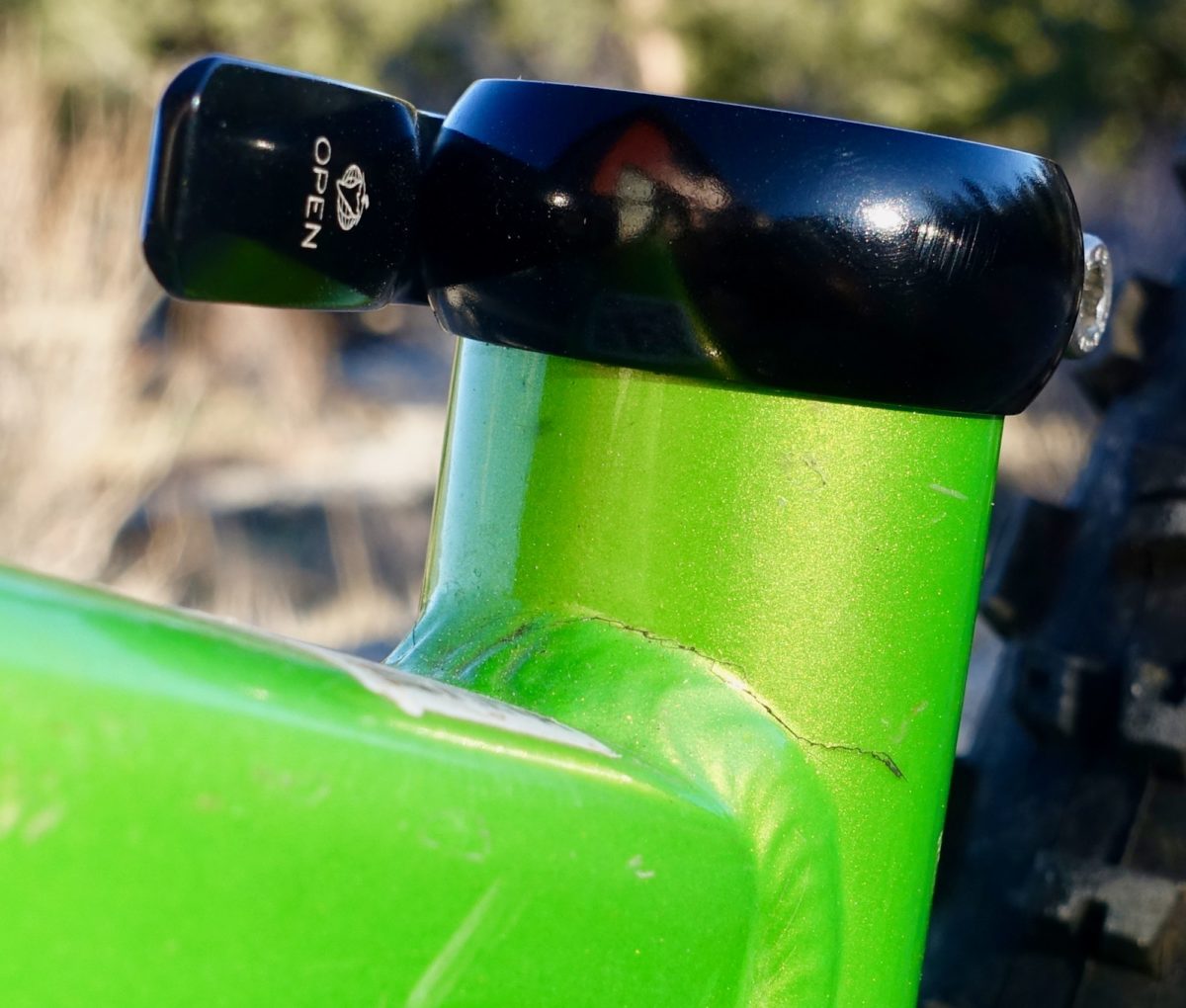Product warranties are designed to give consumers confidence in their purchases. For many people, a new mountain bike is one of the biggest purchases imaginable. But have you ever studied your new mountain bike warranty, or actually tried to make a claim? If not, you may be in for a rude surprise. Here are the things most bike warranties don’t cover, the things they do cover, and a list of brands that seem to offer the most generous bike warranties.
Sorry, That’s Not Covered
Keep in mind that this is a general list, so you’ll want to read your individual warranties to see what isn’t covered. While some exclusions may sound generic or benign, it turns out most of them are pretty broad and are wide-open to interpretation by the company you’re dealing with.
Crashes

This is one of the most common exclusions in a bike warranty, and for the most part, consumers are understanding. If someone crashes a bike due to an accident, and in the process, damages a component, clearly the manufacturer has no obligation to replace the broken part.
But what if a crash is caused by a part that fails? In many situations, it’s difficult to determine the cause of a crash, let alone the reason a part failed. There’s a joke that pretty much every warranty claim begins with the statement that the rider was “just riding along” when all of a sudden…. Bike companies hear this all the time, and often, they determine that the crash was due to rider error, not a defective part.
A related warranty exclusion is the “improper use” clause. For example, if an XC-rated, carbon rim blows up after you successfully land (not crash) a monster jump, that’s improper use and it’s not covered.
Improper Installation
We’ve all tried to DIY a bike repair or two, only to find out we don’t know what the heck we’re doing. Even professional mechanics make mistakes, or in some cases aren’t properly trained to begin with. Most bike warranties exclude damage or malfunction due to improper installation, which can come down to something as minute as having the wrong torque on a bolt or tire pressure that’s out of spec.
Improper Maintenance

If you don’t lube your chain, it isn’t really fair to blame the manufacturer if your links seize up or rust apart. For this reason, most bike warranties exclude issues related to improper maintenance. (On top of that, most also delineate certain items, like chains and cassettes, as “wear items” that are not covered since by their very nature, they are designed to wear out over time.)
Some warranties even call out conditions like humidity or salinity in the air, so even something as simple as not cleaning a bike regularly can void the warranty.
Alterations
It should come as no surprise, but if you drill a hole in your frame to run an internally-routed dropper post, most bike companies aren’t going to warranty your frame if it breaks. But even seemingly-innocuous alterations like a new paint job will generally void your bike warranty as well.
Non-Spec Parts
Mountain bikers love to customize their bikes, swapping out parts based on personal preference or simply replacing parts as they wear out. However, damage caused to a bike or component due to non-spec parts often is not covered under warranty.
For example, using a shim with an after-market dropper post might seem like a good idea, but if you end up cracking your frame, you probably won’t be covered. Putting 27.5+ wheels on your 29er or just upgrading to wider bars can put unintended stress on various components, which bike companies may not have considered in their original design.
Used Bike Sales
The exception of not honoring a warranty for anyone except the original owner of a mountain bike may seem a little iffy to consumers, and truthfully there are two sides to this. Yes, this clause serves to discourage the used bike market to some degree, which allows bike companies to sell more new bikes. It also gives buyers an incentive to only purchase from authorized sellers.
On the other hand, identifying and verifying the root cause of a problem on a used bike is very difficult for the manufacturer. The current owner may have no idea if the bike was in a crash or if the previous owner maintained the bike properly. For that reason, manufacturers only want to deal with the original owner.
Normal Wear and Tear

Personally, I found this exclusion to be the most surprising–and it’s found in pretty much every bike warranty I looked at. Sure, if a part is a “wear item” it makes sense that normal wear and tear isn’t covered. But what is normal wear and tear on a set of wheels or a bicycle? Every bike component has a useful life, which is why most warranties have a certain time limit attached to them (1, 3, 5, or 10 years). Still, not everyone has the same definition of normal.
Non-Standard Use
Above and beyond normal wear and tear, some warranties expressly exclude non-standardized uses, which can include things like racing/competitive use, “aggressive” riding, or carrying “heavy” loads.
So What Is Covered?

Essentially, when a bike or bike product warranty is advertised, what they’re really referring to is a warranty that the product is free from manufacturing defects. Many companies like to tout the length of their warranty: some are good for a year, others for 10 years, and still others are lifetime warranties. However, if the warranty only covers manufacturing defects, by definition these are problems that exist on day 1, all the way through day 10,000. In fact, these are problems that exist before the product even gets to your local bike shop.
Granted, some manufacturing defects won’t be apparent upon first inspection, and it might take a few rides to determine that a bike or part isn’t working the way it’s supposed to work. But the chances that a manufacturing defect won’t be uncovered in, say, a set of carbon wheels after a year of use, is pretty slim. At that point, a more likely explanation is the problem is due to “normal wear and tear” or “improper use.”

More Costs that Aren’t Covered
What if it turns out the problem with our bike frame isn’t due to anything we did wrong? What if it was totally a manufacturing defect the company is responsible for fixing? We get a free replacement, right? Not so fast.
First off, it’s up to the company to decide how they will resolve the issue. In some cases, the product might not exist anymore so the company has to substitute a different product. In other cases, the company might choose to repair the item rather than replacing it with a new one.
Then, there’s the issue of the repairs themselves. Most contracts exclude labor and shipping costs, which the consumer will have to pay themselves. For example, if there is a problem with a bike frame, technically the manufacturer doesn’t have to pay for the labor to remove all the parts and reinstall them after the repair. Nor do they have to pay the customer’s costs to get the bike to them in the first place.
Oh, and if you get injured due to a problem with the bike, whether the problem itself is covered by the warranty or not, you’ll need to pay any medical expenses yourself.

Finally, Some Good News
Most of these warranties are written by lawyers who are paid to limit risk to the companies they represent. But that’s not to say that manufacturers always follow their own warranty contracts; more often than not, the warranty just represents a worst-case scenario.
At the end of the day, each situation is unique, and it will come down to two parties working together to find a solution. Companies don’t always take a hard-line approach to all the “gotchas” in their warranties; what they really want is to make the customer happy without losing too much money in the process.
Good Warranties
Based on my readings of several industry warranties, there are a few that stand out by offering better coverage than others. Note: these recommendations are not based on actual warranty experiences. Rather, they are simply based on how the warranties themselves are written.
Both Santa Cruz and Pivot offer crash replacement programs, which make parts available at minimal cost to the consumer. While neither company makes any promises on actual pricing or availability, this can still be reassuring to consumers. Santa Cruz even offers a lifetime pivot bearing replacement program to original owners, which I’ve taken advantage of myself.
Niner’s crash replacement program does specify pricing, offering a 35% discount off retail pricing for a replacement frame in the event of a crash (subject to approval). The Niner warranty also specifies that racing and hard riding are covered under their 5-year frame warranty.
ENVE doesn’t include the “normal wear and tear” exclusion in their warranty, only excluding “blatantly abused” products. Ibis says their “rims are covered from failure due to impact damage under normal riding circumstances,” which sounds good. Yet, further down, they also say normal wear and tear is not covered, so it’s unclear how this might be applied.
Your Turn
Have you ever inquired about warranty service for your bike? How did it go?
To read some of these warranties for yourself, click below.
- Enve Wheels
- Giant
- Ibis
- Niner
- Pivot
- Reynolds Wheels
- Santa Cruz
- Specialized
- Surly gets the award for the easiest to read and most entertaining warranty
- Trek
- Yeti





















7 Comments
Dec 8, 2017
How can I do that?
Dec 8, 2017
Dec 7, 2017
The response I received from Trek HQ is their dealers can set their own policies.
I really didn't expect this.
Dec 6, 2017
Dec 6, 2017
Dec 6, 2017
Dec 8, 2017